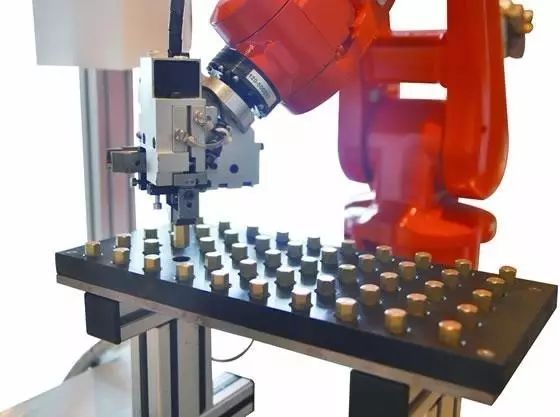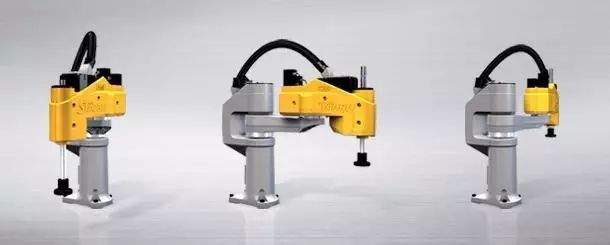Industrial robots in the PCB industry and their types and case studies
The PCB industry is a technology-intensive and capital-intensive industry, but it is still a labor-intensive industry. A large number of automation equipment requires manual operation and assembly line operations. A medium-sized PCB company has thousands of employees.
With the transfer and upgrading of the industry, the implementation of the new labor contract law, the rising cost of urban living brought about by the economic restructuring, and the difficulty of management and the mobility of the staff after the 80s and 90s, PCB manufacturers are experiencing more and more serious problems. The shortage of labor and the rising labor costs, and the resulting impact on production planning, product quality and profitability.
At the same time, with the improvement of robot performance and the decline of price, the replacement of the traditional "automation equipment + manual operation" production mode by "automation equipment + industrial robot operation" will become the transformation trend of the PCB industry.
First, the types and characteristics of industrial robots
Industrial robot is a multi-functional, multi-degree-of-freedom mechatronics automatic mechanical equipment and system that can complete certain operational tasks in the manufacturing process through repeated programming and automatic control. It can be combined with a manufacturing host or a production line to form a single or multiple machines. The machine automation system enables unmanned operation in a variety of production operations such as handling, welding, sorting, assembly and painting.
Since the advent of the first generation of robots in the United States in the early 1960s, the development and application of industrial robots has developed rapidly and has become more and more widely used in production. It has become an important high-level automation equipment for modern manufacturing.
Industrial robots are mainly composed of two parts: the body (including the mechanical torso part, the motor, the reducer) and the electronic control (including the drive and control system). The function is to use the end of the actuator instead of the human hand to grab the item or tool to complete different tasks. . There are currently three mainstream industrial robots, including: SCARA (four-axis parallel joint robot), DELTA (parallel robot), and six-axis articulated robot (including multi-joint robots with six or more axes and derived dual-arm robots).
The most notable features of industrial robots are summarized in the following three points:
1, programmable
Further development of production automation is flexible automation. Industrial robots can be reprogrammed with the needs of their work tasks and environmental changes, so it can play a very good role in a flexible manufacturing process with small batches and multiple varieties with balanced and high efficiency. It is an important part of flexible manufacturing systems (FMS). component.
2, personification
Industrial robots have similar human walking, waist, arms, arms, wrists, and claws on the mechanical structure. There is a computer in control. In addition, intelligent industrial robots have many human-like "biosensors" such as skin contact sensors, force sensors, load sensors, vision sensors, acoustic sensors, and language functions. Sensors improve the ability of industrial robots to adapt to the surrounding environment.
3, versatility
In addition to specially designed dedicated industrial robots, general industrial robots have better versatility when performing different tasks. For example, replacing industrial robot hand end operators (hands, tools, etc.) can perform different tasks.
Second, industrial robots in the PCB industry application case
Industrial robots were mainly used in the automobile manufacturing industry in the early days. They completed welding, assembly, handling, and spraying in the automobile production process. These aspects did not require high precision and speed for the robots. However, the PCB industry is relatively complicated. The application of robots in the PCB industry is mainly reflected in the functions of loading and unloading, flipping, sorting, positioning and detection of various processes, and it is necessary to replace the operation of manual processing of PCB board processing equipment and testing equipment.
Due to the diversity and complexity of PCB boards, there are single-layer boards, double-layer boards, multi-layer boards, flexible boards, soft and hard bonding boards, non-porous boards and perforated boards, etc., resulting in more requirements for front-end actuators; There are requirements for positioning accuracy and requirements for work tempo, so the requirements for robot technology and integration technology are also high in industrial robot applications.
After nearly two years of exploration and practice in the industry, we have worked hard to help customers solve problems, meet customer needs, and accumulated experience in industrial applications.
At present, we have mature solutions for many process steps in the PCB industry, such as AOI, exposure machine, drilling target machine (OPE, XZ), silver paste hole, text inkjet, brown pre-stack, finished product Disk, OSP, finished product cleaning, DOME film reverse coating, LCD assembly, etc.
The following highlights the representative application cases of the three robots:
1. Six-axis multi-joint robot for AOI inspection process
The traditional AOI scanning machine relies on artificially placing the board, turning the board and closing the board. One person is watching two machines, and repeating the monotonous movement every day, and the newly made circuit board will emit a pungent smell to the human body. Bringing certain damage, the infrared light emitted by the AOI scanning machine is also an invisible killer.
We use a six-axis multi-joint robot to replace the workers responsible for the boarding, turning and closing of the two AOIs. Each shift can complete more than 700 PCB hard boards, and the overall efficiency can reach 1/min. This includes the AOI machine scan time). If the loading and unloading transport line that cooperates with the rewinding machine can be further connected to the AGV for fixed line transfer, the fully automated production of the upper and lower processes can be realized.

PCB circuit board AOI inspection equipment video case
2. SCARA robot is used for circuit board coil detection process
At present, the whole set of testing equipment for short-circuiting of multi-layer coils is still on the market. Most of the testing equipments rely on manual. The PCB board with large aperture is manually placed on the testing equipment and then turned on for equipment detection. The PCB board with small aperture is small. It is necessary to manually hold the device (probe) to detect each coil. We can use the SCARA robot to complete the loading and unloading of the matching inspection equipment, and realize the one-time detection of all the coils of the large-aperture board. For the small-aperture board, we use the SCARA equipment to perform the fixed probe and visually locate. With the probe to detect each coil, our equipment also effectively avoids the missed detection due to small aperture or large aperture. Compared with manual operation, the detection efficiency can be significantly improved, and the quality problems caused by missed inspection can be avoided.

3, DELTA robot for small circuit board finished cartoning process
The existing FPC loading trays are manually picked up one by one and placed in the blister tray. Since the FPC is soft and thin, it is inconvenient and the efficiency is greatly reduced. The Delta800 plus a visual system can be messy. The FPC stack is qualified and then placed in the blister tray as required, the effect is not inferior to manual. His speed can reach 60 pieces/min, which can completely replace the manual sorting.

Third, industrial robots in the PCB industry instead of artificial advantages
Like the automotive industry and other manufacturing industries, industrial robots bring many advantages to the enterprise in the PCB industry.
1. Reduce labor, speed up work and improve work efficiency. The robot can achieve higher speed repetitive operations, which can be much higher than the manual work tempo, resulting in a significant increase in work efficiency and labor costs and management costs.
2. Improve work accuracy and improve product quality. Robots can use programming and vision systems to achieve accurate positioning and repeatability, effectively improving the quality of the product.
3. Avoid potential threats to workers' health and safety in the operating environment and save on environmental safety.
4. Reduce the efficiency and quality degradation and accident rate caused by the influence of repeated and dry processes on the state of workers.
5. Optimize the operation process and reduce the working space.
6, effectively reduce the material consumption rate.
7, can work continuously for 24 hours and work in a black light environment.
8, can make the manufacturing process flexible. In the future, the PCB industry will have more and more orders in small quantities. The use of industrial robots can greatly increase the flexibility of production and achieve fast delivery of orders.
9. Enhancement of brand image and reputation. The application of industrial robots has further improved the automation level of PCB manufacturers, and promoted the advancement of product quality, production efficiency, cost control, and responsiveness, and improved the overall competitiveness of manufacturers in the industry.
Fourth, industrial robots in the PCB industry application prospects
At present, the application of industrial robots in the PCB industry is still in its infancy, and it still faces many problems that need to be solved. Many of the PCB industry's operating lines are non-standard products. In the robot application process, they are limited by the existing working space. Due to the limitations of the original equipment capabilities, in the face of the influence of different PCB material factors, it is also necessary to consider the application of various sensors to improve the robot. The intelligence is also considered to train a group of employees who can operate and maintain the robot.
The application of industrial robots in the PCB industry in the future will present the following trends:
1. From single station or single line applications to multi-line applications. It is difficult for existing PCB companies to fully introduce robots to achieve automated production. It is necessary to invest a large amount of funds for transformation, but it can be step-by-step transformation on single-station and single-line with conditions. After obtaining obvious results, gradually expand the scope of application.
2. From the application of simple robots to the application of other intelligent equipment such as AGV. Most of the material transfer between the existing process lines is manual operation, which can be distributed to realize the orderly transfer of materials by robot and AGV.
3. The existing plant is mainly applied to local applications. The new plant construction will be integrated into the overall planning and directly imported into the application of robots and AGVs.
4. The combination of industrial robots and the Internet of Things will make the manufacturing process more intelligent and flexible.
CAT6 rj45 Keystone Jack is a part of networking cabling solutions for patch panels, wall mounting plates,face plates, surface mount boxes with T568A T568B standard wiring. It could get 10G+ Ethernet calbing solutions with more conveniet, low price and cost effective in various packing customized.
The contacting point is finished by gold plated, and easy snap into retaining clip to make sure corrosion connecting freely and security.
CAT6 Keystone Jack,Keystone Jack CAT6,Cat6 keystone,cat6 keystone coupler
NINGBO UONICORE ELECTRONICS CO., LTD , https://www.uniconmelectronics.com